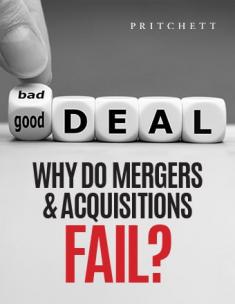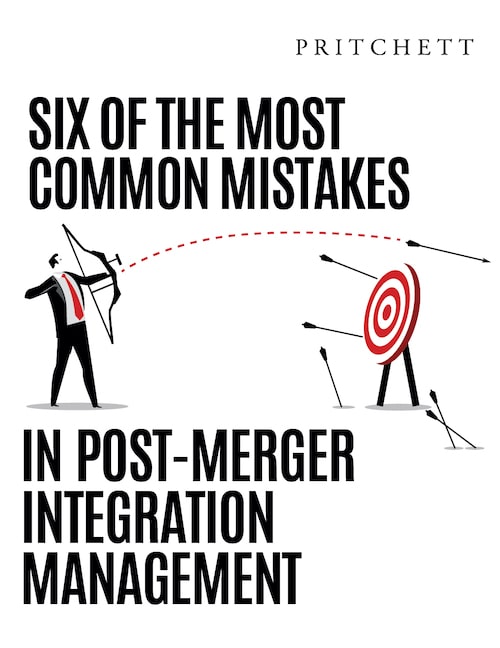Ten common reasons why M&A fail:
- Paying too much. Some companies feel they have to overpay to block a competitive bid or to protect their turf. But when too much is paid, it can kill any chance to achieve a satisfactory return on investment.
- Lack of strategic clarity. Companies often acquire for the wrong or unclear reasons. For instance, organizations may catch deal fever. They get caught up in a buying frenzy because other companies are making acquisitions. As a result, they do not realistically analyze how a deal will create value.
- Slow decision-making. It can derail a deal. Problems that go unaddressed and grow will eventually hamper an organization's ability to compete.
- Lack of buy-in. We’ve all seen situations where the best-laid plans go astray. Integration plans aren’t worth the paper they’re written on if the people who are responsible for executing those plans don’t understand them or want to make them work.
- Culture clash. Even companies in the same industry, serving the same customer segments, and holding the same values can suffer from culture clash. Culture incompatibility is real and can cause a deal to fail just as surely as other more "tangible" reasons.
- Loss of key customers. Because mergers make the market nervous, competitors may be able to persuade even loyal customers to jump ship.
- Erosion of business fundamentals. The urgent demands of integration often take precedence over the day-to-day running of the business. As business fundamentals begin to erode, people tend to blame the problems on the merger. This can begin a vicious downward spiral of reduced revenues, sinking profits, and customer defections.
- Talent attrition.M&A often gives key talent inside the organization reason to pause and reconsider their career options. People who might otherwise ignore headhunters may now take their calls.
- Under-resourced integrations. Let’s face it. Integrating two companies is a lot of work and it can be exhausting. Often, the same people responsible for running the business are tasked with planning and executing the integration. This double workload can burn people out and slow the integration. As a result, some anticipated synergies are realized late or not at all.
- Complexity. Some companies overcomplicate their combinations. They tackle too many problems simultaneously. They fail to prioritize. This can lead to a sense of chaos and confusion that frightens people and leaves them unsure of what to do next. The key is to figure out the value drivers of a deal and stay laser-focused on them.





